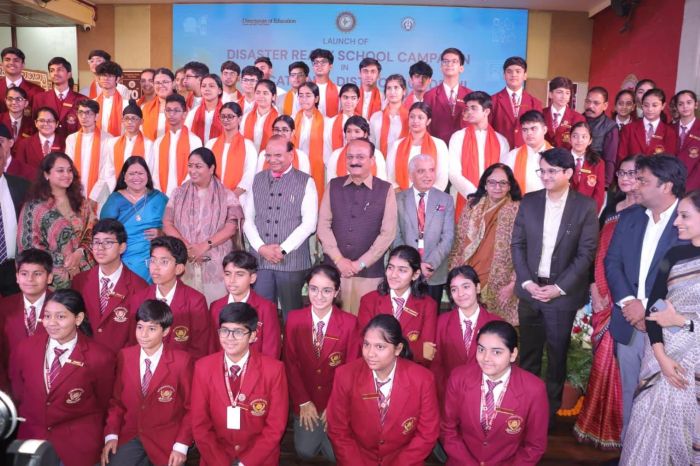
UGC’s accreditation agency for higher education institutions (HEIs) in India, the National Assessment and Accreditation Committee (NAAC, esb 1994), is switching over to binary system of accreditation from this year following acceptance of the final report of the Dr. K. Radhakrishnan Committee by the Government in January.
The accreditation reform comes even as the original proposal of setting up of the National Accreditation Council (NAC) under the proposed Higher Education Commission of India (HECI) to replace NAAC as per NEP 2020 is still a future work for the new Government that will be formed after the upcoming Parliamentary elections. The Dr. K. Radhakrishnan Committee report finalized after incorporating feedback and comments on its draft released in May 2023, has nevertheless planted the binary system of accreditation for HEIs.
The overarching committee under the chairmanship of Dr. K. Radhakrishnan (former ISRO chairman) was constituted in November 2022 to propose reforms in the accreditation system of NAAC primarily for the implementation of NEP 2020. However, at the same time the calls for its overhaul were growing louder for some years now following several reports of alleged corruption and using an outdated static evaluation rubric. So, it is like killing two birds with one stone.
A reflection on the mood of the accreditation environment in the country would tell that NAAC grades widely advertised by HEIs to attract students, in some cases are thought to be ‘unreliable and received as unfair favors’. Then there has been a sluggish uptake to accreditation from HEIs largely due to NAAC’s lack of capacity. As of January 2023, only 418 universities and 9062 colleges out of 1113 universities and 43,796 colleges are accredited under NAAC accreditation system in the country. The current system of grading is based on a Cumulative Grade Point Average (CGPA) of seven key parameters on a scale of 4 under four categories, viz. A, B, C and D, denoting Very good, Good, Satisfactory and Unsatisfactory levels respectively. Those score 1.5 of less are not accredited. The new binary system seeks to do away with this grading.
As per an official statement of the Union Ministry of Education, in the first stage, the Binary accreditation will be implemented in the next four months and no new applications will be accepted as per the present methodology thereafter. Institutions that have already applied and are applying in the next four months shall have the option to either go by the present process or by the new methodology of binary accreditation. As per the ministry, Binary Accreditation (Either accredited or not accredited) is also in line with the best practices followed from many leading countries in the world.
The other change is inception of a Maturity-Based Graded Accreditation (Level 1 to 5) to encourage accredited Institutions to raise their bar, continuously improve, evolve in-depth or in-breadth in disciplines from ‘Level 1’ to ‘Level 4’ as Institutions of National Excellence, and then to ‘Level-5’ i.e. Institutions of Global Excellence for Multi-Disciplinary Research and Education. “The leveled accreditation shall enable Indian institutions to significantly improve their quality and position themselves among global top institutions,’ the statement notes. The Maturity based Graded levels will be implemented by December 2024.
The methodologies and formats are being redesigned based on recommendations of Dr. Radhakrishnan committee report and the same shall also be reflected in the data collection and validation process using One Nation One Data Platform making the system friendly, easy and smooth. “By implementing all the recommendations comprehensively before the end of 2024, the Indian higher education system will be making a transformation, enhancing the quality and credibility of Indian institutions and thereby contributing to the socio-economic leadership of India as part of Amrit Kaal vision of Prime Minister Shri Narendra Modi,” the statement adds.
According to Dr Pankaj Mittal, Secretary General of Association of Indian Universities (AIU) Binary accreditation ensures a clear and objective standard, providing stakeholders with confidence in the quality and consistency of accredited institutions, simplifying decision-making processes for students, employers, and policymakers. “Switching the accreditation system from graded to binary will stop the rat race among the higher education institutions for getting the highest grade. This will also encourage more Universities and colleges to apply for accreditation as the fear of getting a lower grade will be eliminated. Binary accreditation is a globally accepted practice and will bring Indian Accreditation system at par with Global standards,” she adds.
It may be mentioned that under NEP 2020, it is proposed that all HEIs will aim, through their Institutional Development Plans (IDPs), to attain the highest level of accreditation over the next 15 years, and thereby eventually aim to function as self-governing degree-granting institutions/clusters. .
While the new process is still taking shape, it remains to be seen if it will restore the robustness and transparency in the system while speeding up the accreditation process with more applicants. Then regain the ‘lost’ reputation of its current accreditation process due to its perceived unreliability, NAAC has a major mission at its hands.
…Autar Nehru









